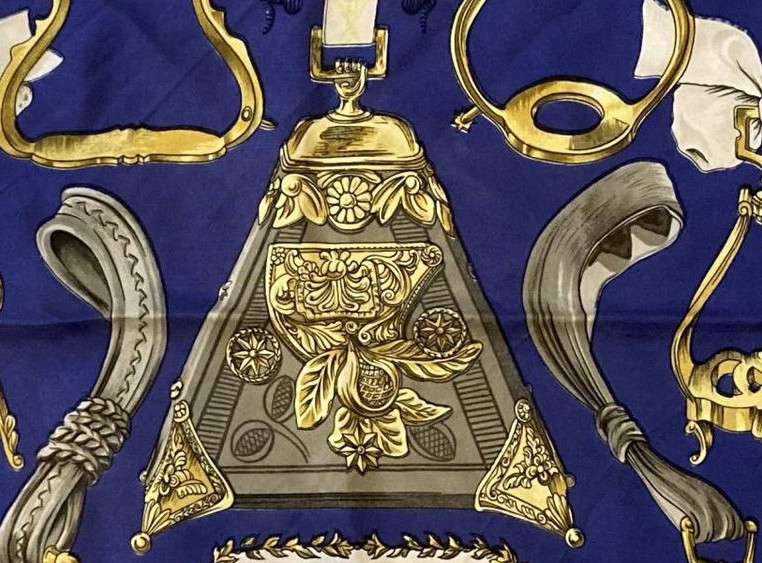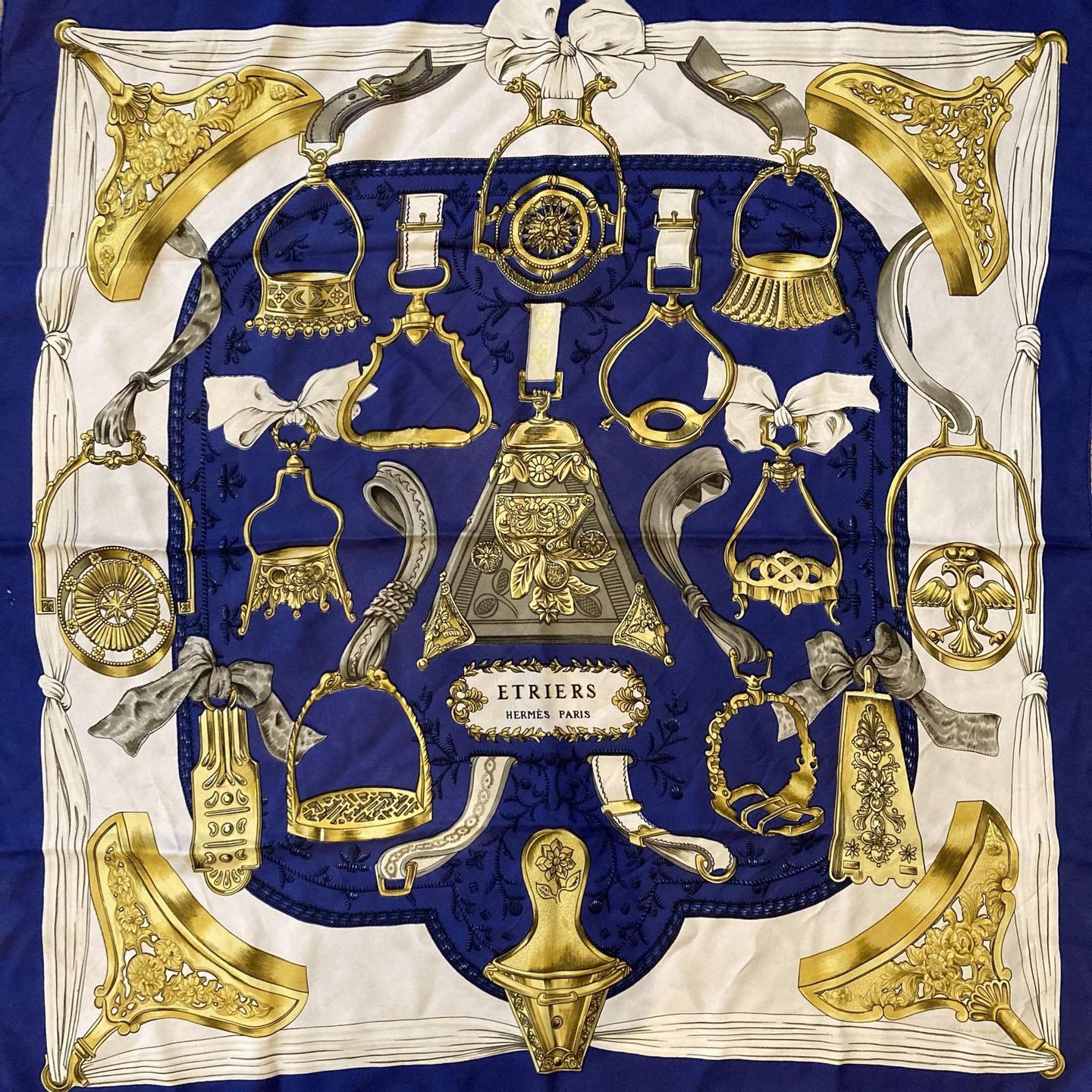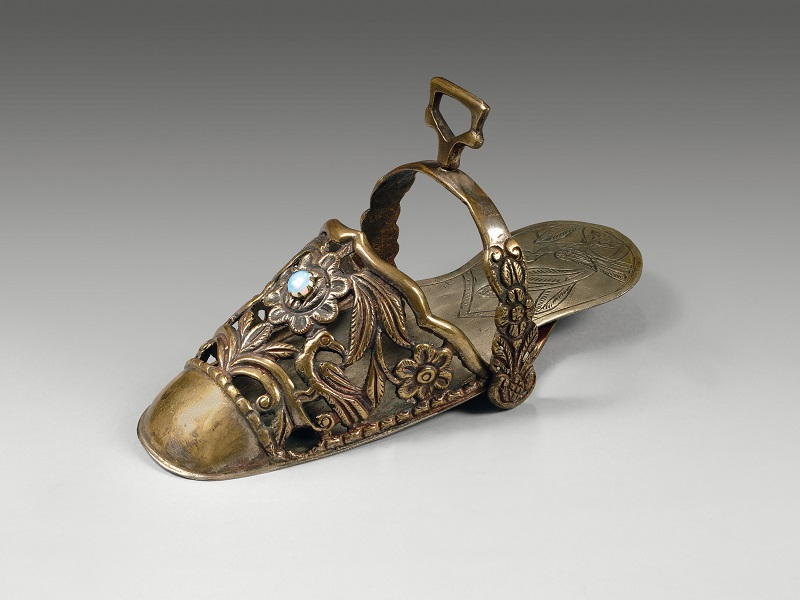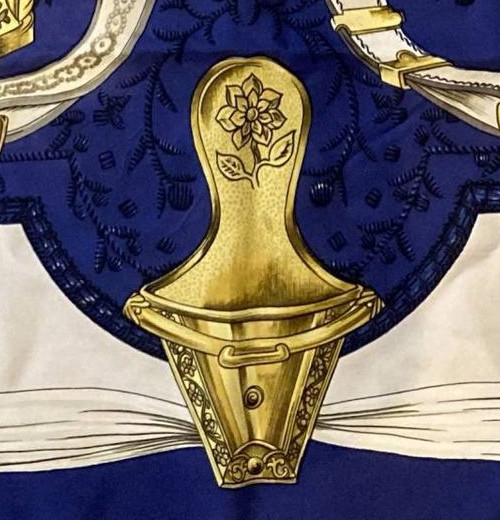The Hermès scarf Étriers, created by Françoise de La Perrière in 1964, showcases a stunning design inspired by Emile Hermès’ extensive collection of stirrups. This design features sixteen different types of stirrups from diverse origins such as France, the Middle East, and South America, dating back to the 18th and 19th centuries. This rich history is beautifully captured in the intricate details of the scarf.

At the center of the scarf, a massive Peruvian pyramid-shaped stirrup commands attention, dominating the composition with its grandeur. This centerpiece is a testament to the intricate craftsmanship and cultural significance of the stirrups collected by Emile Hermès.

Surrounding this central piece are various other stirrups, each with its own unique story and design elements, creating a visual feast for the eyes.

One notable feature is the sidesaddle stirrup positioned below the central stirrup. This type was traditionally used by women riding sidesaddle and is marked with the copyright symbol “c” in its center, highlighting its authenticity and historical value. The sidesaddle stirrup exemplifies the elegance and functionality of historical equestrian equipment, merging practicality with artistic design.
The scarf also depicts a range of other stirrups, including the barred stirrup, swivel stirrup, and French stirrups. French stirrups are known for their heavier design, offering more comfort during rides, while Hungarian stirrups are lighter, providing better control and enabling faster riding.

Each stirrup featured on the scarf represents a blend of form and function, illustrating the diverse styles and uses of these essential equestrian tools throughout history.
